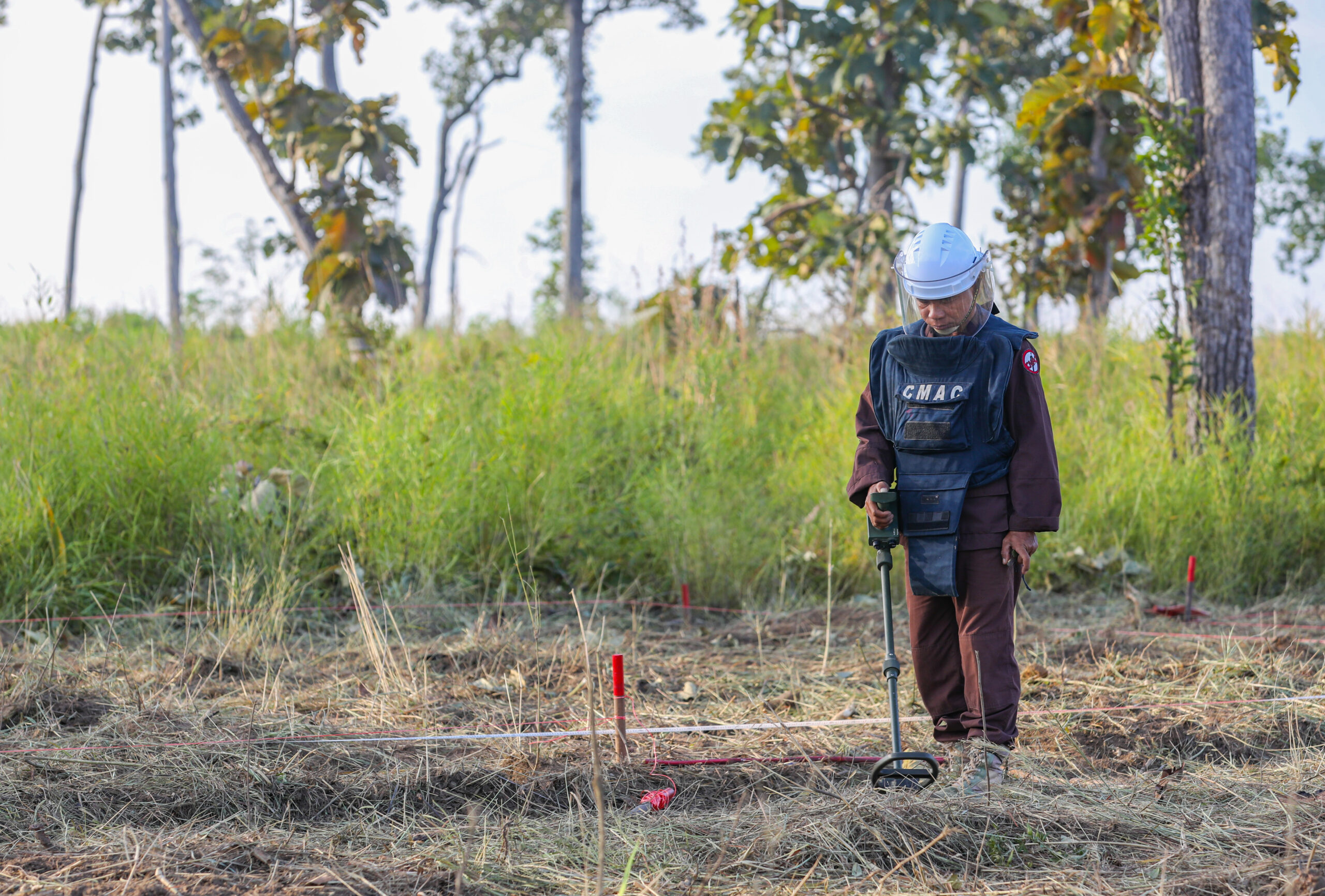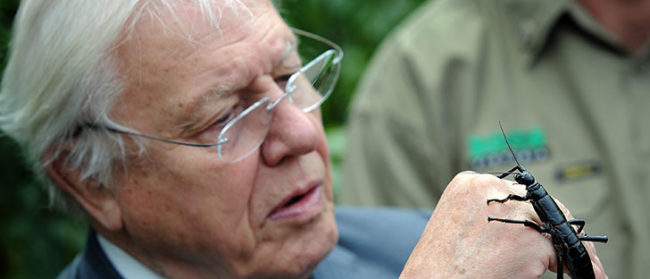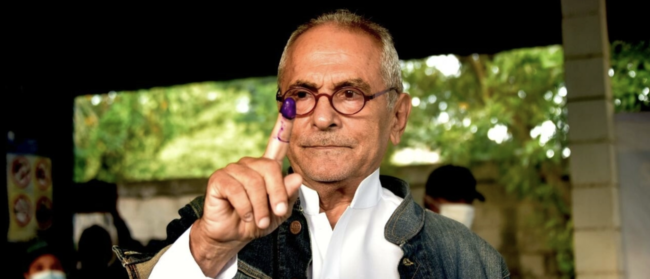Editor’s Note: This article is the first in a three-part series addressing landmines and other unexploded ordnance in Cambodia, a remnant of past conflicts continuing to impact the safety and livelihoods of people living near former war zones.
Hen Sonn heard the rumours of landmines in her new village when she moved in 2008, but the offer of a larger plot of land sounded too good to pass up.
The whispers didn’t stop her from moving, but they made her nervous enough to avoid starting a farm. Instead, Sonn decided to forage in the forests around her home in Senchey village.
“I didn’t have much choice,” Sonn said.
The mines she was quietly warned about, however, extended far past her two hectares (five acres). Within a year of moving, Sonn was picking damlaung, a type of wild potato, when she stepped on a rumour, losing her left leg and most of her hearing in the blast.
After three decades of mine and explosive ordnance removal, also known as ‘mine action,’ the Cambodian government plans to clear the final known areas contaminated by mines by 2025 and ‘release’ the property back to owners.
“That would be a happy ending for the country, for all the people that would finally be safe, but it is too late for some of us,” Sonn said, nodding at her prosthetic leg adorned with floral patterns.
Despite mine clearance and the 2021 release of her land in Preah Vihear – a province bordering Laos and Thailand in northern Cambodia, the most heavily landmined region in the country – Sonn’s hope of starting a farm remains on hold.
More than 70% of the land released since Cambodia’s mine action began is used for agriculture, one of the Kingdom’s most significant industries, according to a study by the Geneva International Centre of Humanitarian Demining.
While grateful for the land release, residents of Senchey village said they face a new challenge in making the land productive. Earmarked for the poorest populations, recently demined land is often left isolated from vital farming infrastructure, such as irrigation canals and access roads.
Senchey residents and others who have waited decades to safely cultivate their lands for the first time are left with few options but to rely on weather-dependent, traditional agriculture.
Studies have found the methods are vulnerable to increasingly erratic rainfall and extreme weather caused by climate change. But as Cambodia races toward the goal of clearing remaining minefields in less than three years, those trying to farm released lands are left to plough on as best they can.
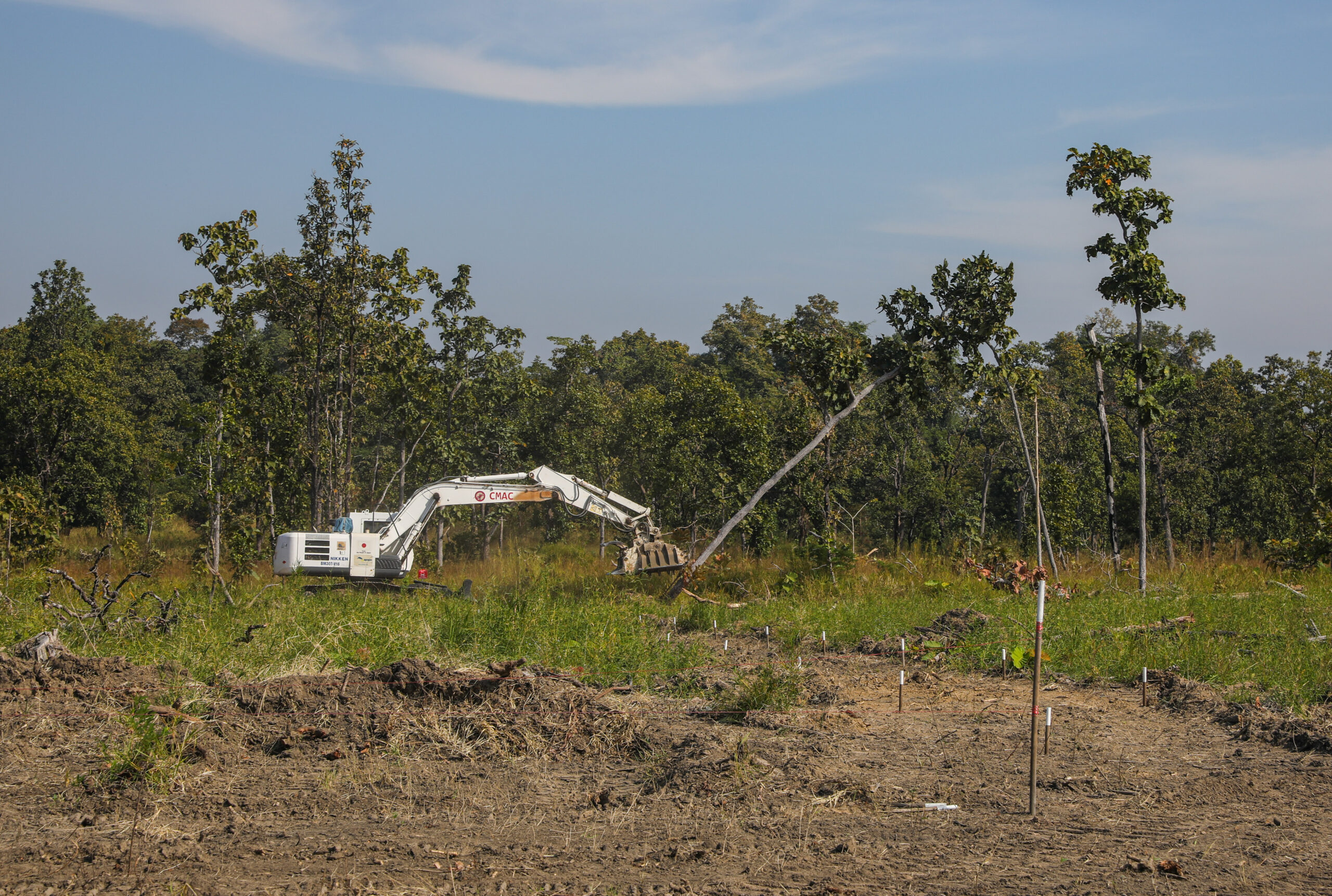
Surrounded by neighbours, Sonn sat in the shade of a tree slowly elongated by the setting sun. Shadows of branches seemed to point towards a sign at the edge of the plot confirming the release of the former minefield.
Since the land was cleared in 2021, the neighbours seated around Sonn have been eagerly farming cashews, cassava and rice. With Cambodia’s monsoonal climate signalling the end of the harvest, the cluster of farmers compared their reapings and future plans for planting, which they all said is a cause for concern.
“The land we all have is in this area that was all contaminated, so we don’t usually have a dam or irrigation. We farm with flat land that we cannot collect water from, so we are not prepared for dry or wet seasons,” said Lem Phary, one of the neighbours seated around Sonn. “We have to do traditional farming. It might work, it might not. It is a challenge because we don’t have money to invest in this.”
Mine action officially began in the Kingdom when the UN Transitional Authority in Cambodia established the Cambodian Mine Action Centre in 1992. The centre was replaced in 2000 by the Cambodian Mine Action and Victim Assistance Authority (CMAA).
Cambodians who own property affected by landmines are encouraged to notify CMAA, which evaluates the land for potential registration as a contaminated area. People are advised to stay off registered areas until they’re cleared and released to the owner, a process organised by the mine action authority.
Approximately 4,500 square kilometres (1,737 square miles) of Cambodian land was estimated to be contaminated by remnants of war, affecting nearly half of the country’s 14,000 villages in every province, according to a 2004 landmine impact survey.
The National Mine Action Strategy released in 2018 reported a remaining 1,970 square kilometres (760 square miles) of total land area contaminated by remnants of war, including landmines and other unexploded ordnance such as cluster munitions.
From then through March 2022, an additional 535 square kilometres (206 square miles) had been cleared, according to CMAA.
The national plan also announced the mine action authority’s aim to declare Cambodia landmine free by 2025. Ly Thuch, a senior government minister and CMAA vice president, said this was “an ambitious goal” that only applies to the Kingdom’s known minefields, which as of 2018 spanned 946 square kilometres (365 square miles).
“We are behind the target,” Thuch said of the annual land-clearing objective, attributing the shortfall to a lack of manpower and funding. “The 2025 goal is very important to us. We have a road map, we have a strategy to reach that goal.”
To emphasise his commitment, Thuch pointed to his door at CMAA headquarters in Phnom Penh, where a faded sign read, “It’s 2025!”
An adjacent map in his office detailed the country’s landmine proliferation: all provinces except Kep in southern Cambodia are considered contaminated. Highlighting his optimism, though, Thuch eagerly pointed to Prey Veng province, which he said will be declared landmine free this year.
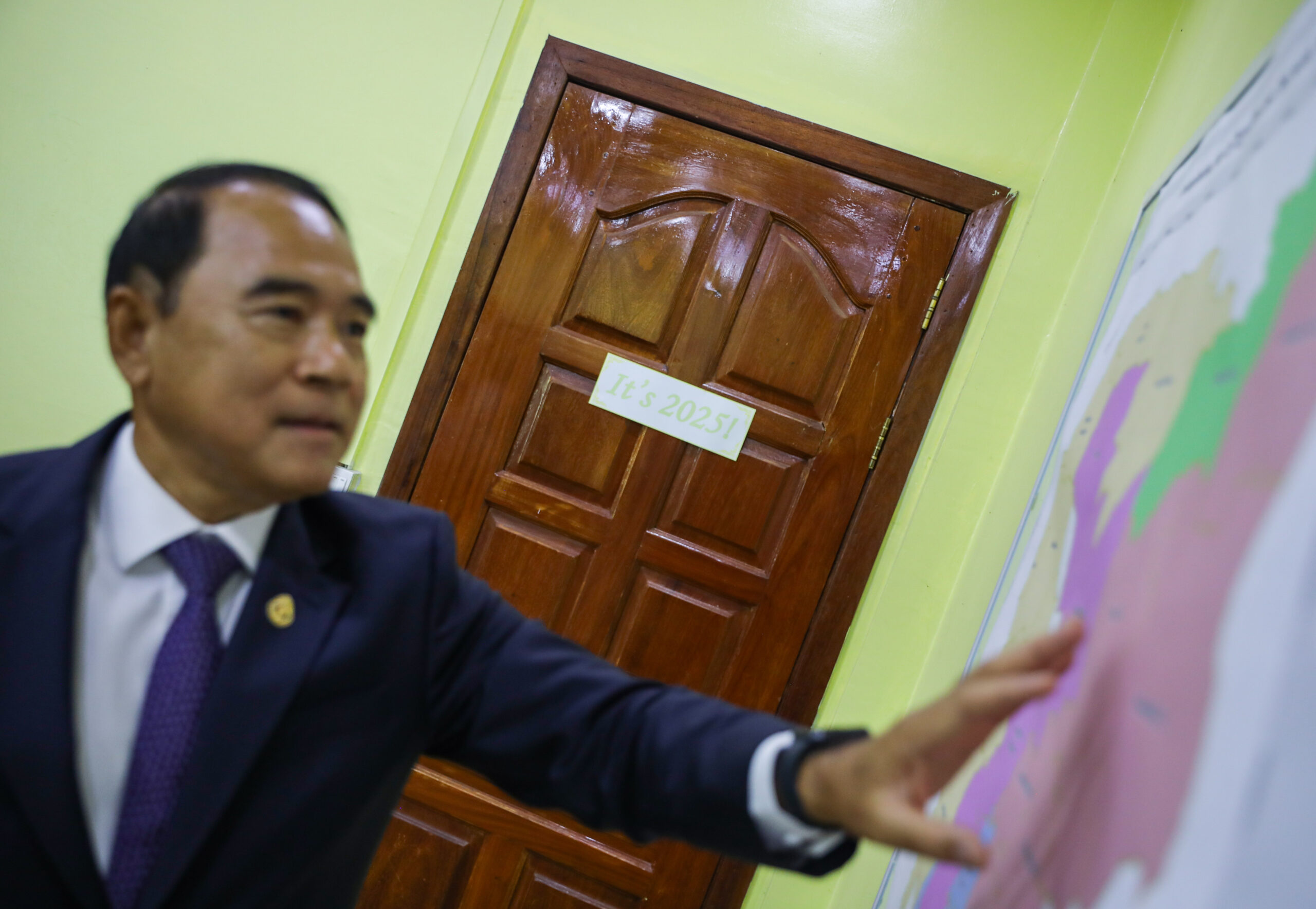
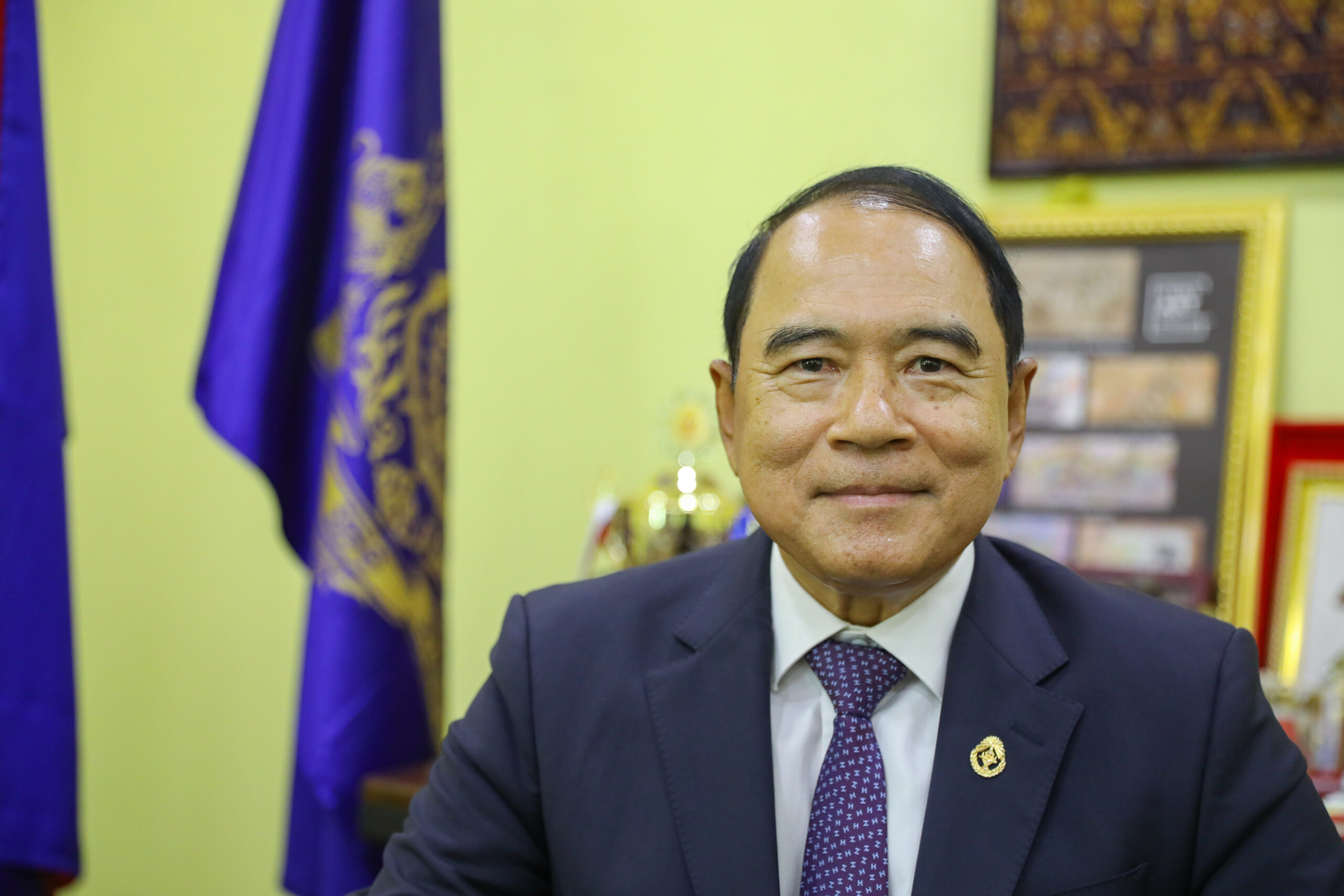
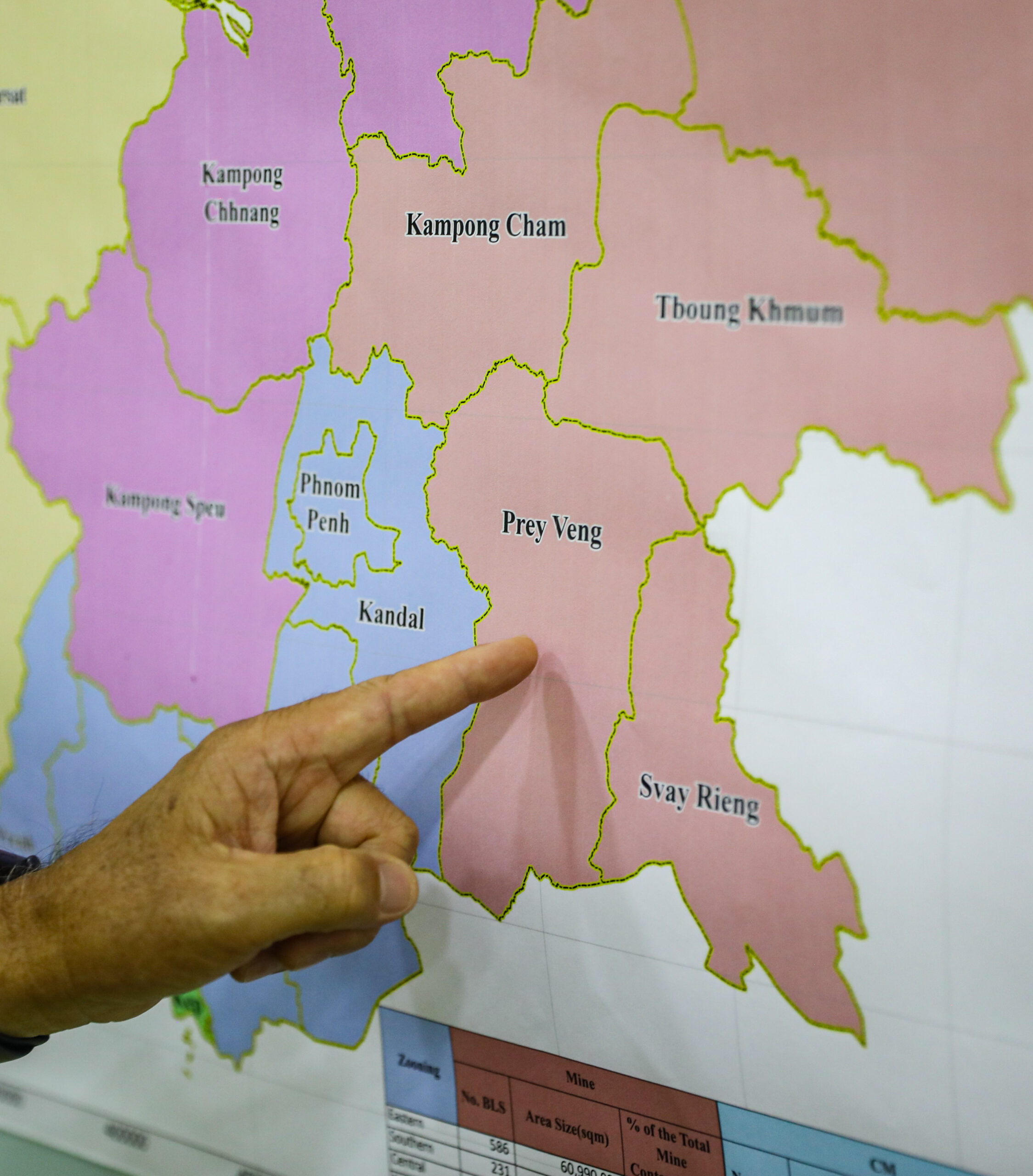
A faded sign on Ly Thuch’s office door at the Cambodian Mine Action and Victim Assistance Authority headquarters reads, “It’s 2025!” The daily prompt reminds Thuch, a senior government minister and CMAA vice president, of the mine action authority’s goal to declare Cambodia landmine free by then. Tuch predicted the southern province of Prey Veng will be the Kingdom’s second province declared landmine free.
Cambodia’s northwestern and northern provinces, including Preah Vihear, are the country’s most heavily mined region, according to the CMAA monthly contamination map hanging in Thuch’s office. The region suffered the brunt of three decades of armed conflicts, which left the Cambodian-Thai border heavily bombed and mined.
No records were kept while Cambodia’s minefields were laid, according to a 2019 study on the link between mine action and transitional justice. The report noted that the Kingdom’s monsoonal climate often buried landmines and unexploded ordnance deeper, making them more difficult and dangerous to detect.
“One landmine can destroy a whole family,” Thuch said. “People keep being killed and injured by those items, so we need to do full clearance to support full peace in our country.”
Throughout Cambodia’s history of mine action, government and civil society programmes have intermittently addressed the struggles of farmers affected by buried explosives. However, as the agricultural sector grapples with issues such as extreme weather, no nationwide landmine initiative has developed.
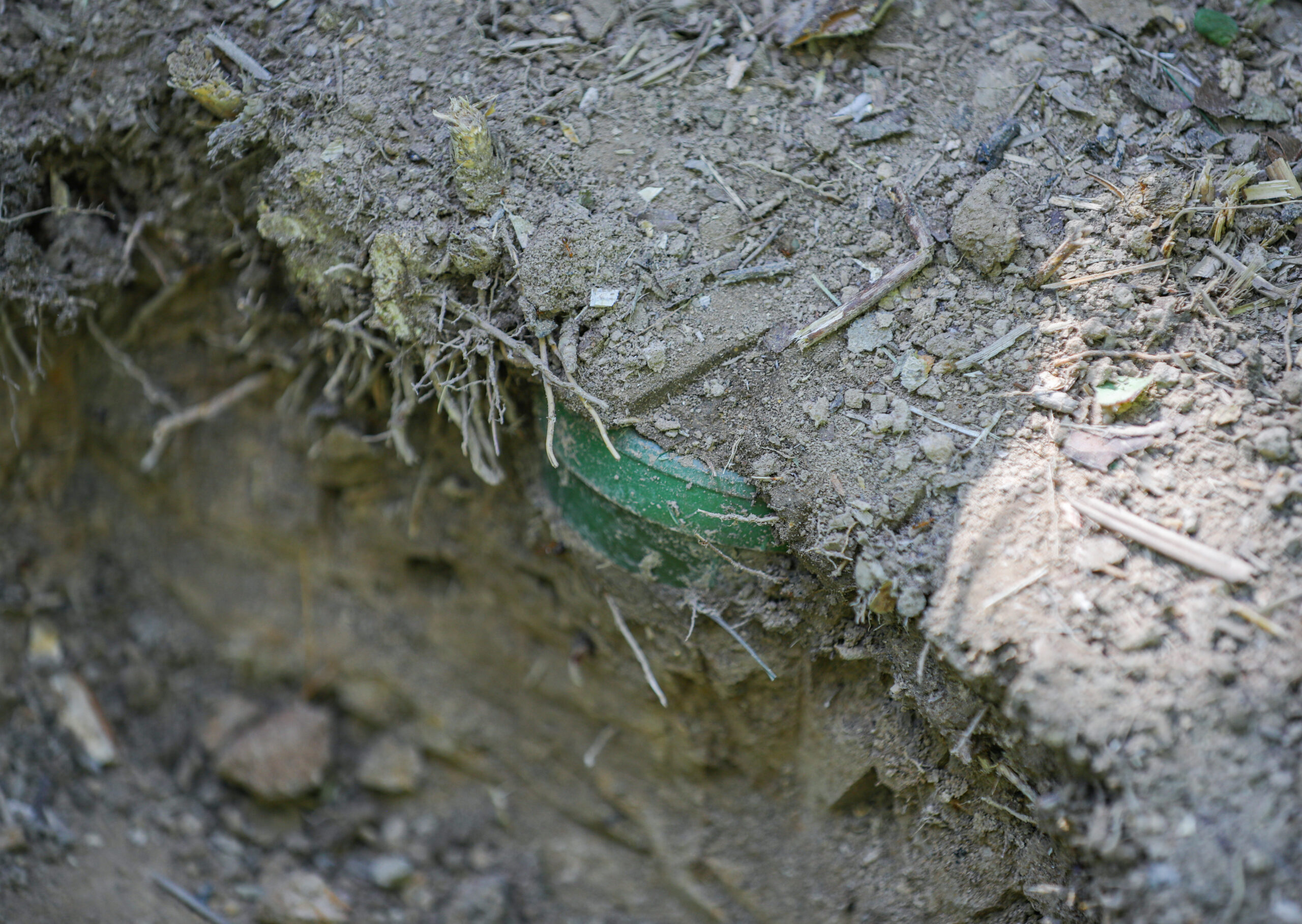
“Assistance doesn’t end with the simple provision of assistance,” said Dahlia Simangan, who co-wrote a 2019 study on the link between mine action and transitional justice in Cambodia. “You cannot just give the land to a farmer. The farmer needs capital and training. Those are forms of assistance that are necessary in conjunction with the distribution of land.”
A sobering reality of unexploded ordnance removal in Cambodia, and elsewhere in Southeast Asia, is that the process is often retroactive. Contaminated land is only discovered after locals find these threats in their communities or, far worse, trigger them, thus becoming landmine victims.
The farming families and caregivers of blast victims often can’t leave the land, which limits development because they can no longer safely cultivate their properties and subsequently become indirect casualties of landmines.
Sonn, as an amputee and landowner unable to leave, is a victim in both senses.
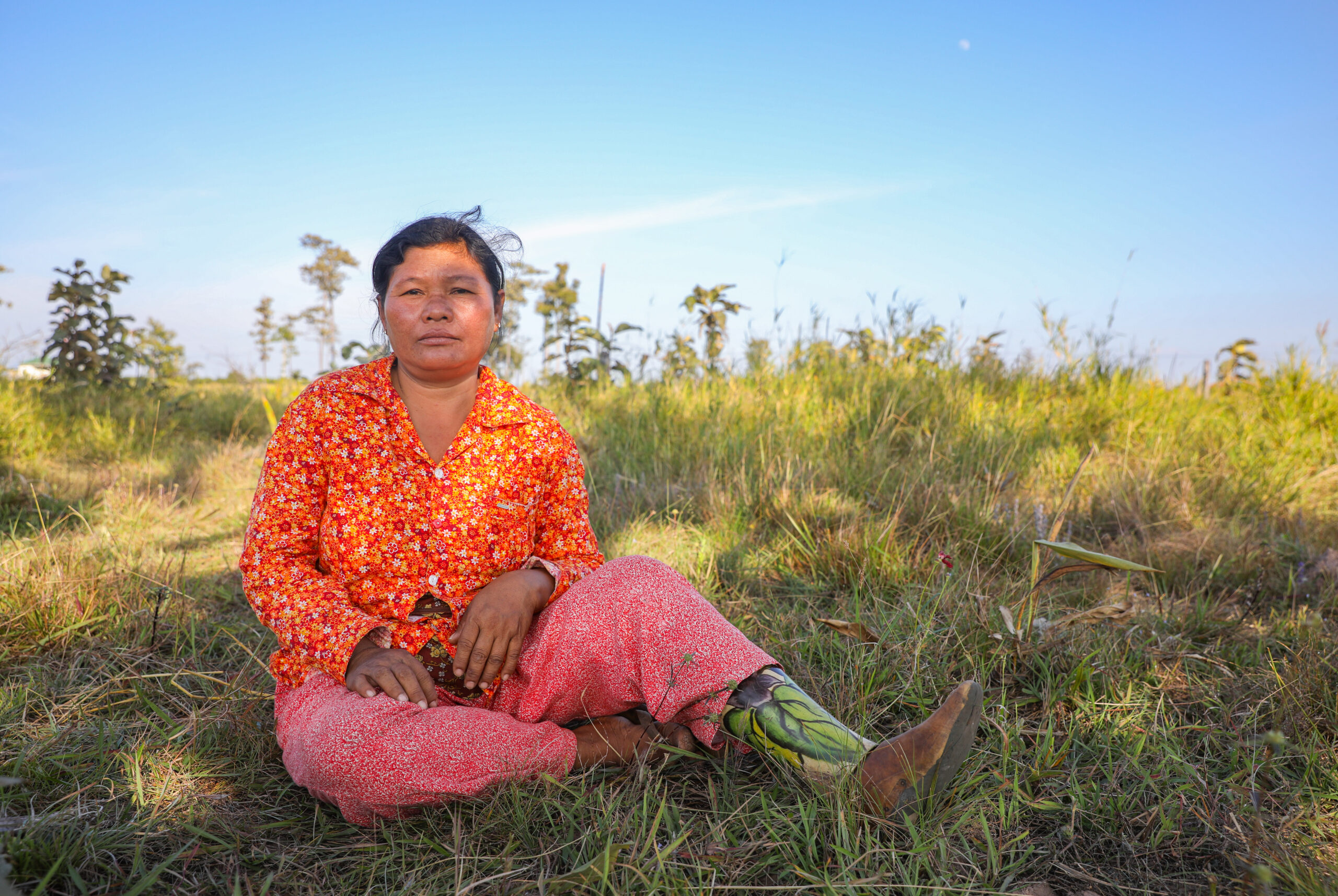
Simangan, a Hiroshima University professor studying post-conflict peacebuilding, said aiding indirect victims makes countries more resilient to future conflicts.
“Mine action touches on something that is very immediate, an existential threat,” Simangan said, adding that mine action also benefits economic development, access to education and other key components of a post-conflict country.
Contaminated land cripples the development of rural communities by cutting off access to natural resources and impairing agricultural potential.
A cost-benefit study on Cambodia’s mine action calculated the financial advantages of using released land outweighed clearance costs. However, the positive cost benefit of removing landmines did not apply to farmland, which makes up the large majority of the use of released lands.
According to that study, agricultural areas were “specifically destined for distribution among the poorest parts of the population” who often did not have access to modern farming techniques and equipment.
A separate agricultural transition study stated that “access to modern knowledge and technologies” was one of the only ways to ensure Cambodian farms could remain profitable and survive “weather variations and climate shocks.”
For impoverished populations trying to cultivate former landmine fields, modern technology is out of reach. Most of the farmwork in Senchey is done by hand and, without irrigation systems, the crops depend almost entirely on rainfall.
“The rice, the land and the water is a combination needed for good growth,” Senchey resident Hol Yeou said. “It is always good to start with new land, and this year was good because we had good water, but we need it every year.”
Ream Dom, who chatted in the semi-circle with Sonn and Yeou, took advantage of her four hectares (just under 10 acres) of released land by planting cassava and rice crops.
“I was scared to use that land, I never even tried to plant on it,” Dom said. “We feel great that the land has been cleared. We used to have to go foraging in groups because it was so dangerous.”
Despite the success of her first farming attempt, Dom voiced concerns about future harvests.
“I am nervous about the weather in the next few years, but I don’t have any other options than planting certain types of plants because of the drought,” Dom said. “I have no other resources for water or better farming, so I have to rely on nature.”
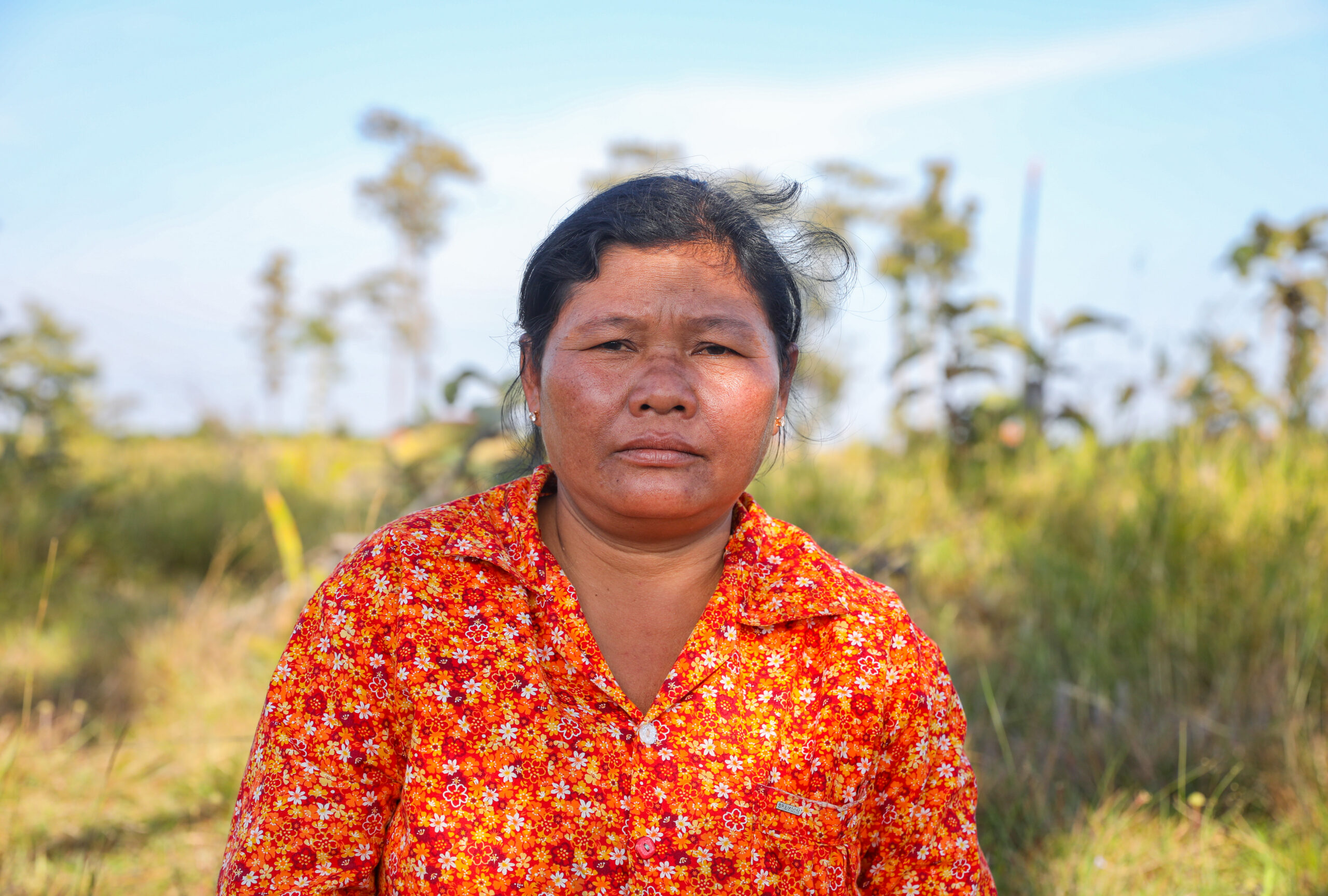
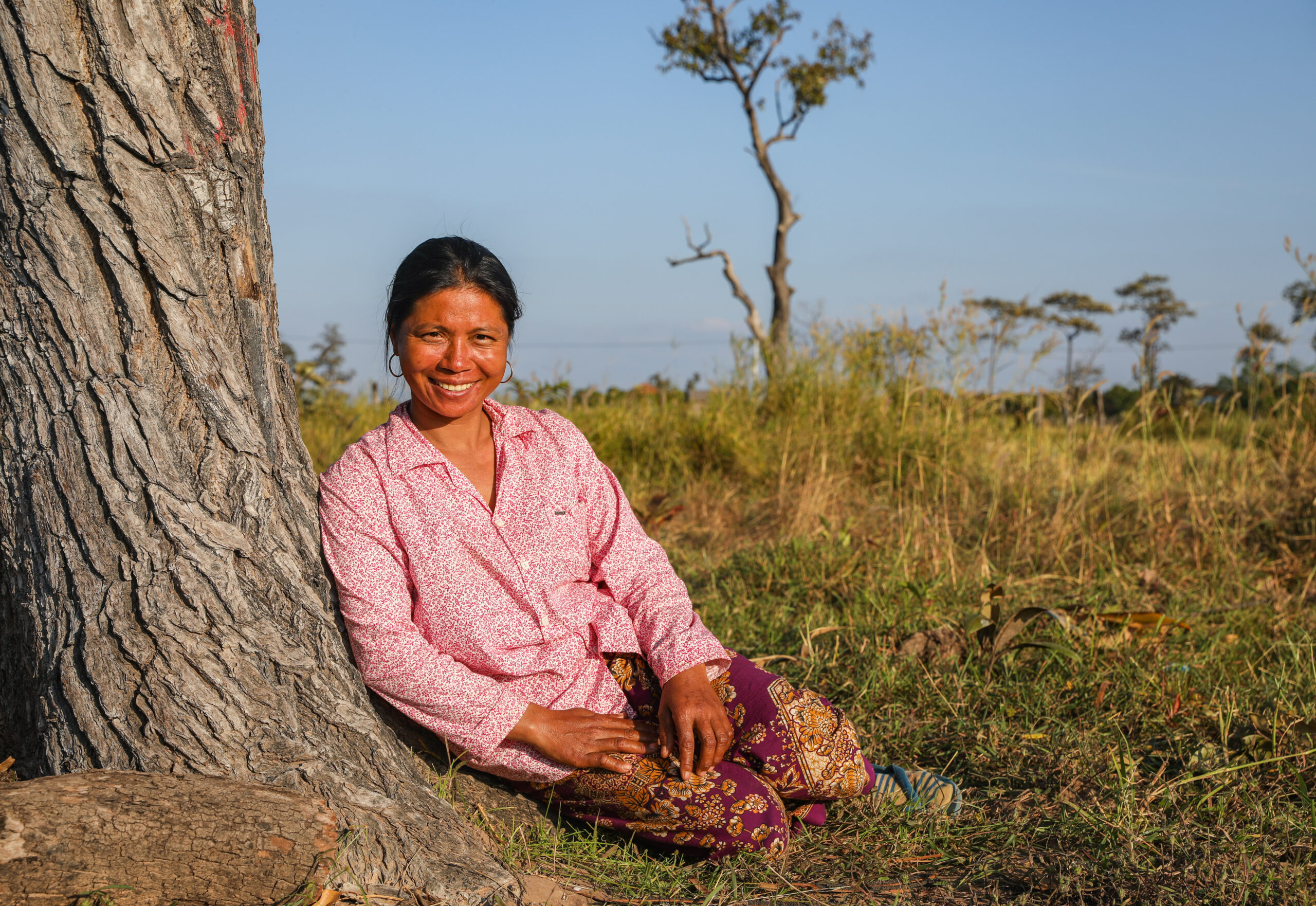
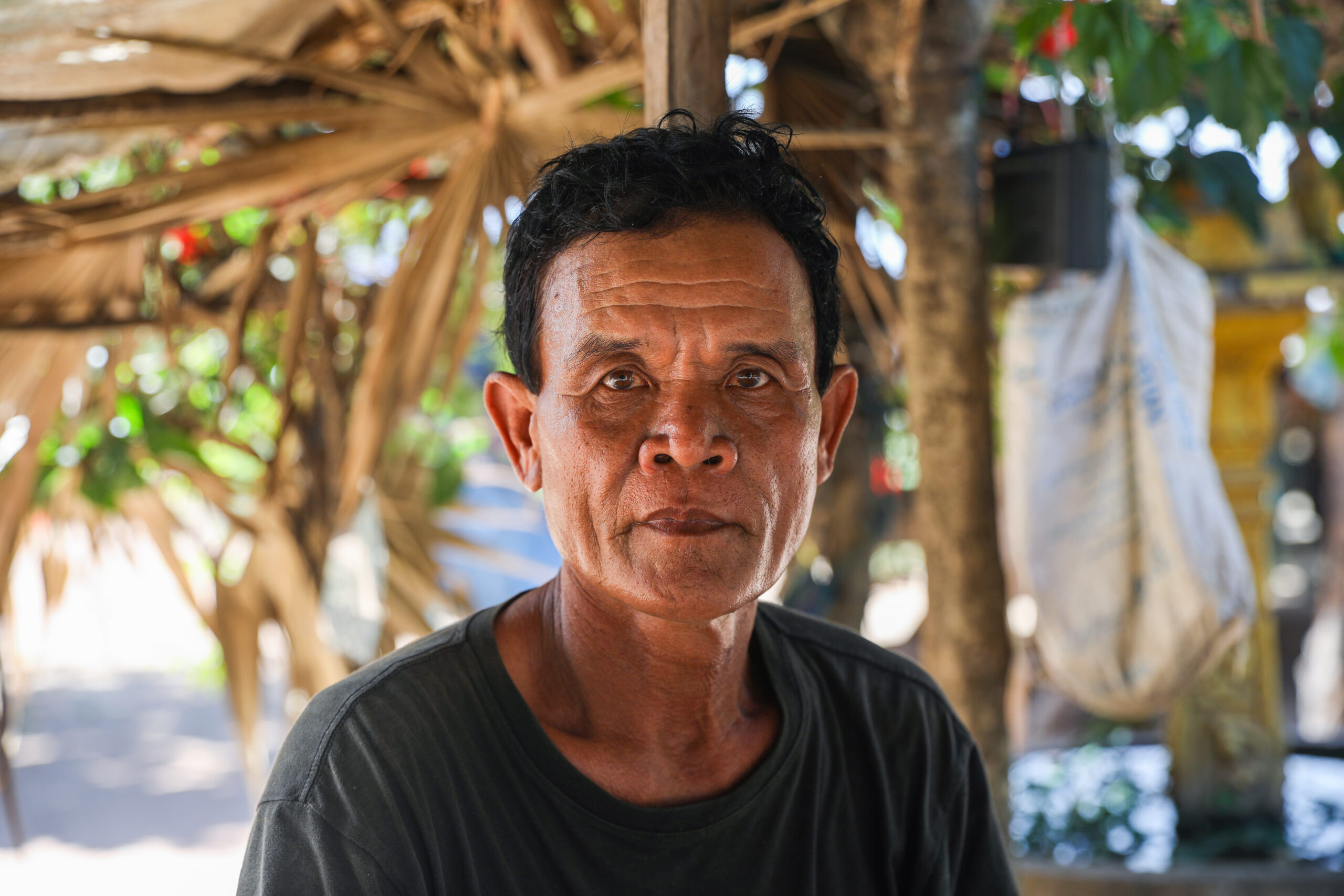
After years of waiting, Hen Sonn (left) and Ream Dom (centre) had their land cleared of landmines in 2021. While Dom began farming her land in Senchey village in Preah Vihear province, Sonn said the land release came too late for her. Land owned by Pov Vanna (right), a resident of Toul Krous village in Siem Reap province, is in the process being cleared and he hopes to begin farming in 2022.
Senchey is hardly the only rural village in Cambodia facing the hard realities of cultivating released lands.
The only road sign leading to Pov Vanna’s home in Toul Krous, a village in Siem Reap province, still warns travellers of minefields sprinkled across the community.
From his house bordering a known minefield, Vanna could hear every blast signalling the destruction of another buried explosive. The soon-to-be farmer has lived in Toul Krous for more than a decade, waiting for the day he could begin farming his half hectare (1.2 acres).
“I can’t do anything with the land, can’t even plant vegetables,” Vanna said. “It is far too stressful and I don’t want to risk my life for some vegetables.”
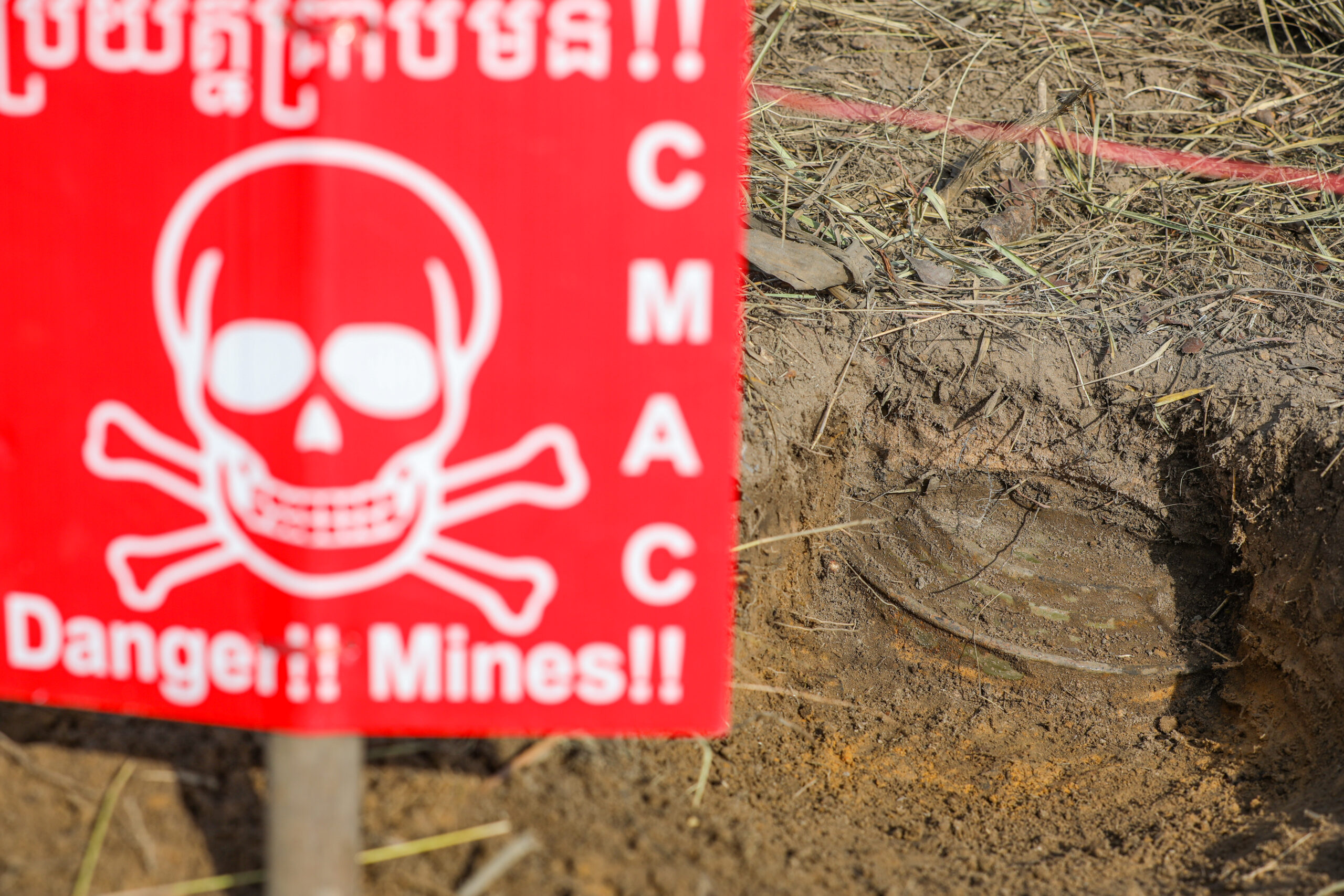
As demining operations moved across Toul Krous, experts cleared narrow, safe walkways between the known minefields.
Vanna said the villagers were “very excited to start planting,” to the point where some were already putting in saplings on the walkways.
“This has been a dream for a long time,” said Vanna, who explained he had little choice but to move to a known mine field. “I know many of the neighbours will feel much safer in their homes knowing there are no landmines.”
Land releases soon follow demining operations, and Vanna said he hoped to start small by planting water spinach and lemongrass. With the frequency of Cambodian droughts, he would need to temper his aspirations in coming years and prioritise vegetables needing little water to grow.
“I have noticed a change in the weather during wet and dry season,” Vanna said. “I am the most worried about the drought, and the heat which is very bad for growing. If I was able to grow vegetables in 2010, I bet my harvest would be better than it is going to be now.”
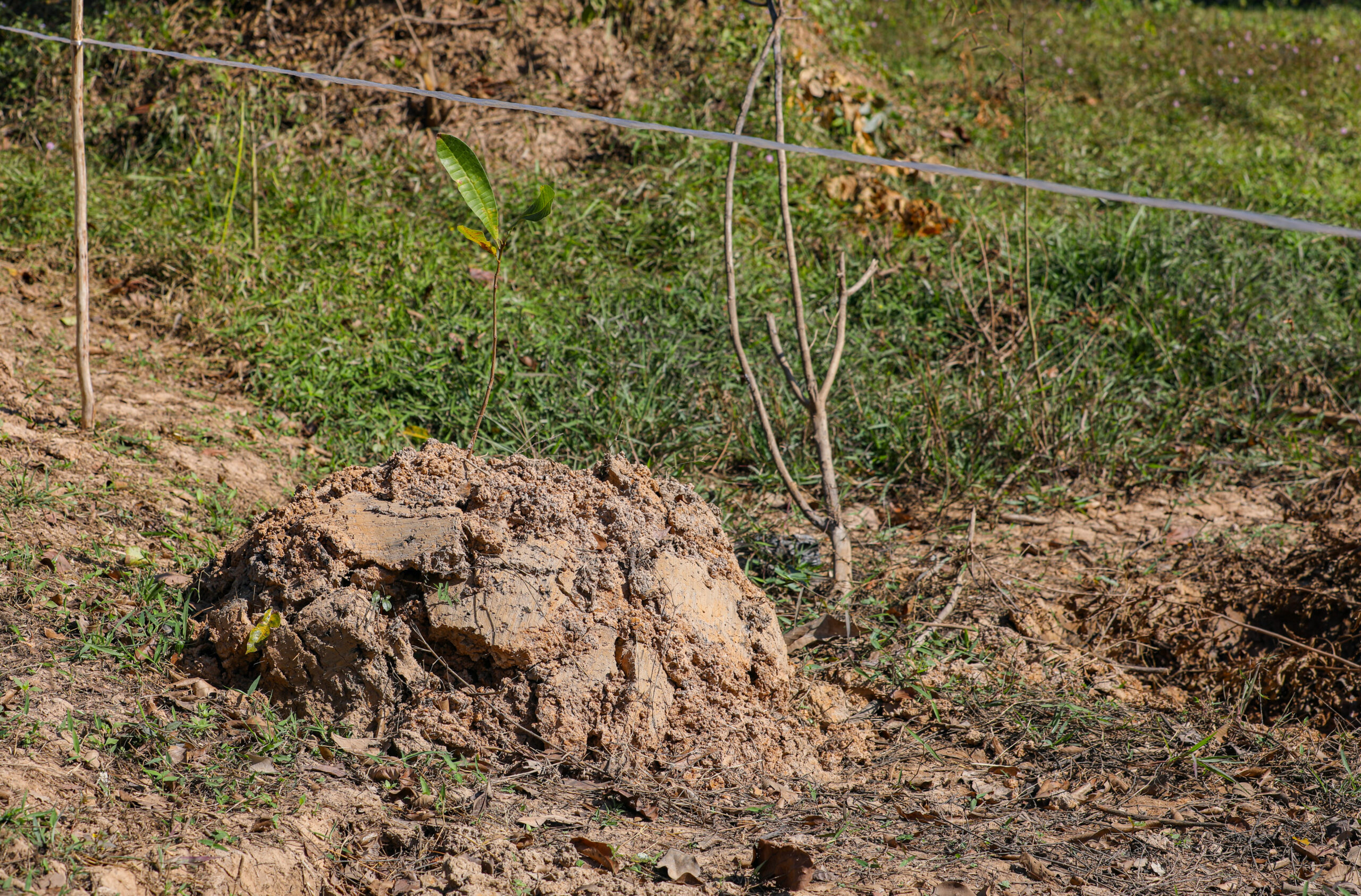
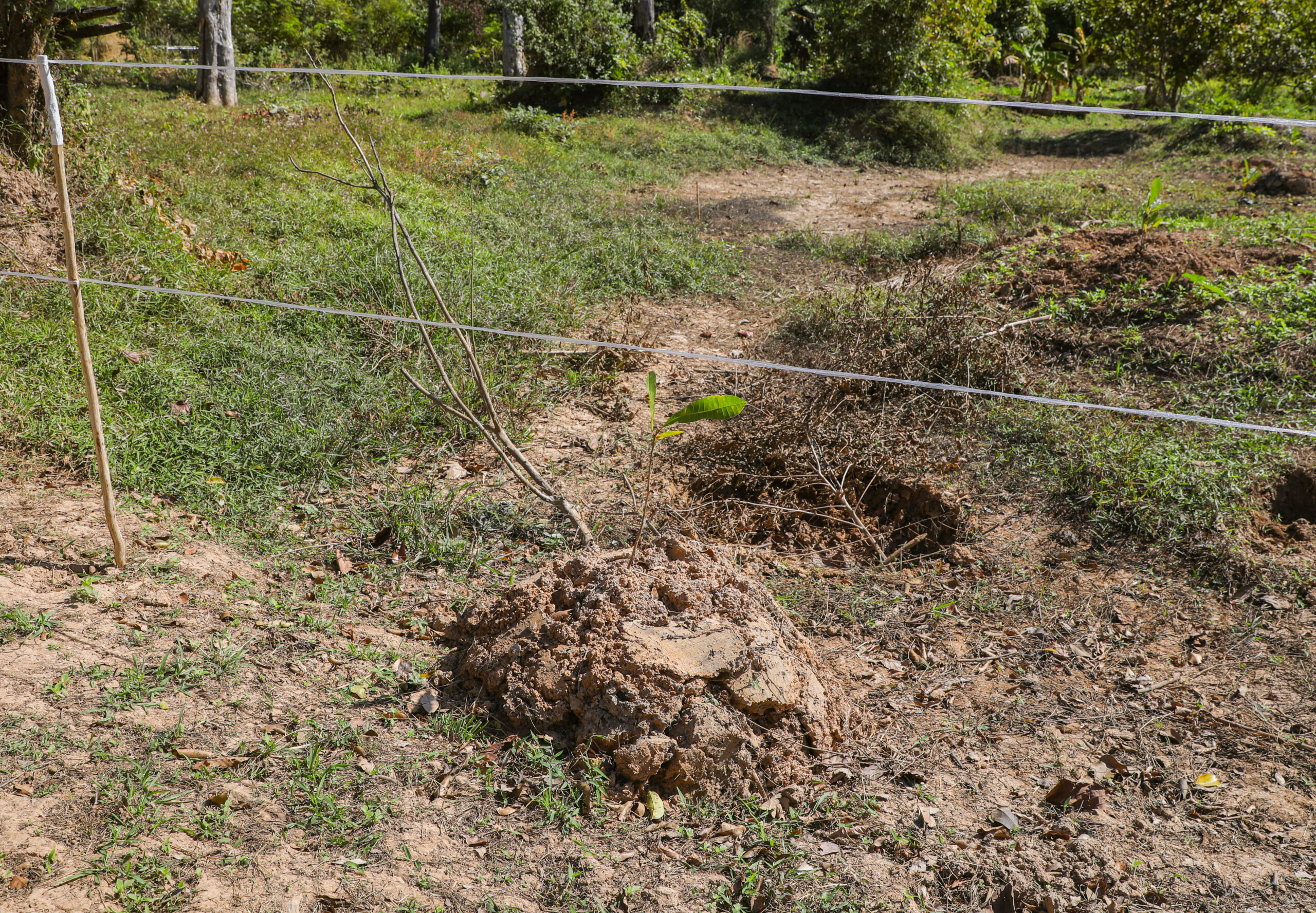
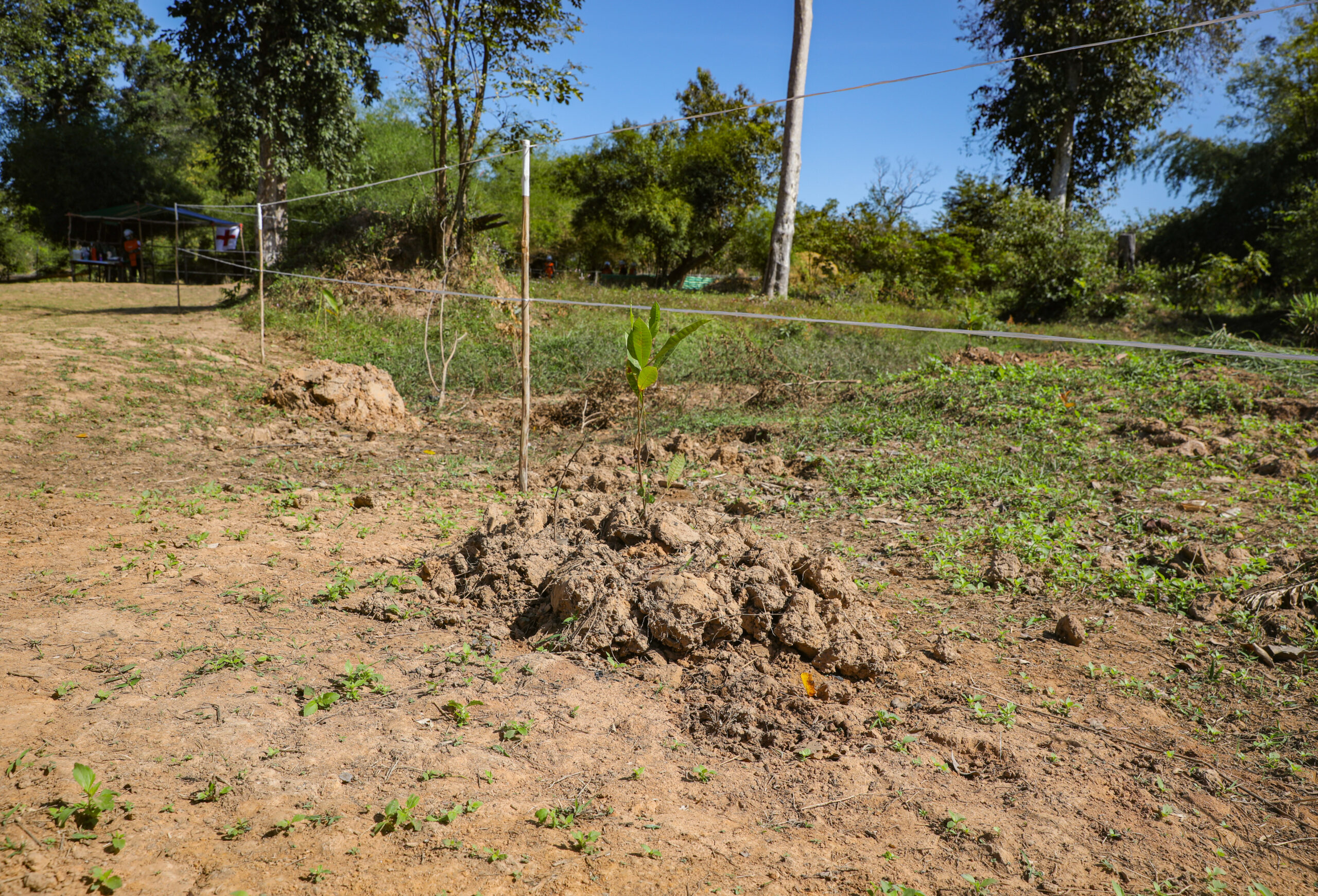
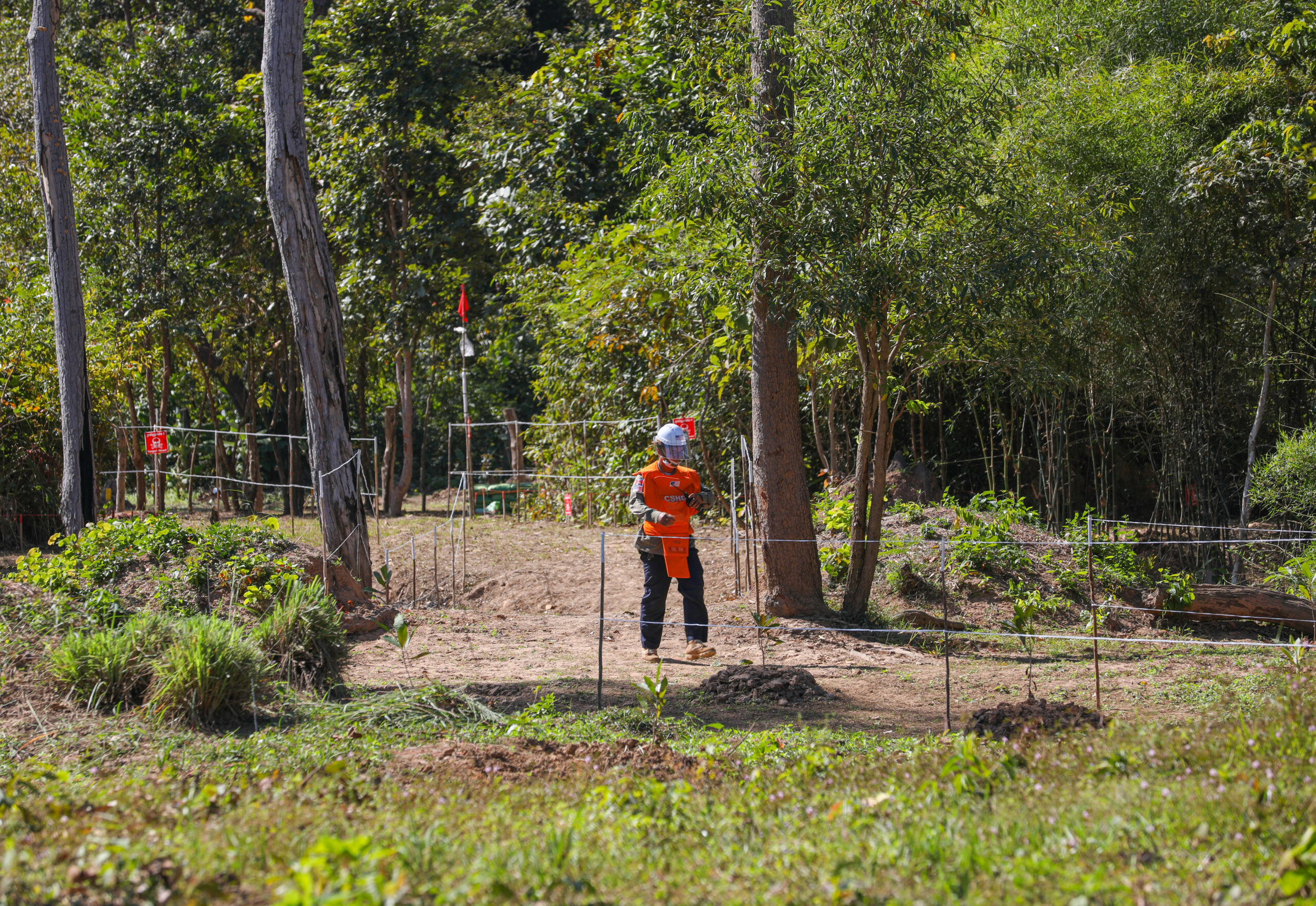
Cambodian Self Help Demining plans to finish clearing the landmine fields around Toul Krous village in Siem Reap province in 2022. Resident Pov Vanna’s declaration that the community is “very excited to start planting” was highlighted by the plants already placed in the narrow safety corridors between active landmine fields.
Residents sometimes must wait decades for their land to be considered cleared of landmines. By the time that happens, it is already too late for some to reap the benefits of their patience.
As dusk settled over Senchey village, Sonn was among the first to leave the cluster of chatty farmers. After a quick wave, she crossed the former minefield on her walk home, taking steady steps with her prosthetic leg on the sun-baked soil.
While more than 500 square kilometres (around 193 square miles) of land still need to be cleared of mines in Preah Vihear, the safe release of property back to farming communities has at least given residents like Sonn some peace of mind.
“When we talk about results, we talk about lives saved and livelihoods improved because they have land to work on to grow crops,” Thuch said. “From land that killed them to land that earns money for them, that produces crops that they can sell.”
Sonn, however, said the released land cannot save her.
Since moving to Preah Vihear more than a decade ago, Sonn has cared for her granddaughter, a tough task that was manageable with her late husband. Since his death in 2020, Sonn said she doesn’t have the physical or financial ability to invest in a farm, despite the long wait for mines to be removed.
“I don’t know what is possible and what is not,” Sonn said. “After this land was cleared, I thought about doing something with it. But with just one leg, just me and the drought and bad weather, I don’t know what.”
The second part of the three-part series on landmines and unexploded ordnances can be found here and the third can be explored here.
